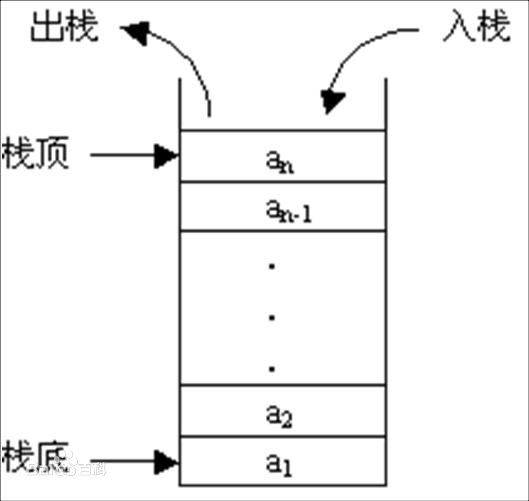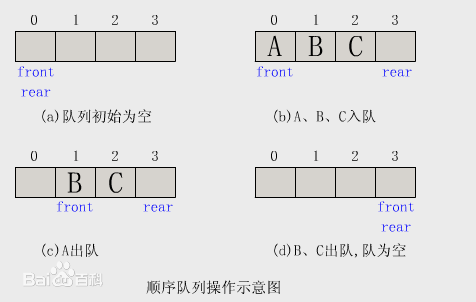模板模擬實現stack和queue
阿新 • • 發佈:2019-02-02
在這裡我們接下來實現兩個資料結構,一個是stack,一個是queue
stack和queue資料特性?
毫無疑問,我想每一個學過資料結構的人都可以脫口而出,棧的資料特性採用的是先進後出,而佇列採用的時候先進先出。

stack和queue採用什麼型別的資料結構?
我們來這樣思考,對於棧來說,我們最多需要操作的是棧頂,如果我們採用鏈式的方式,就需要從頭一直遍歷到尾部,然後才能再次進行維護。而如果我們採用順序的結構,直接可以通過索引來進行訪問,效率會更高。所以對於棧來說我們採用順序的儲存方式最好的。
然後一個問題是對於佇列,我們對佇列採用最多的是頭刪和尾插,這就類似於list操作當中的pushback和popfront,維護起來方便,而對於順序儲存方式,如果我們要頭刪,我們需要把所以後面的元素都向前移動,這樣效率會降低。
瞭解了我們所需要採取的資料結構型別以後,剩下的就簡單了,和以前利用模板實現連結串列和順序表類似,進行寫程式碼。
示例程式碼:
stacak.h
#define _CRT_SECURE_NO_WARNINGS 1
#include<iostream>
#include<cstdlib>
#include<cassert>
using namespace std;
template<typename T>
class Stack
{
public:
Stack()
:_pdata(NULL)
, _sz queue.h
#define _CRT_SECURE_NO_WARNINGS 1
#include<iostream>
#include<cstdlib>
#include<cassert>
using namespace std;
template <typename T>
struct QueueNode
{
public:
QueueNode()
:_next(NULL)
, data(0)
{}
QueueNode *_next;
T data;
};
template<typename T>
class Queue
{
public:
Queue()
:_head(NULL)
, _tail(NULL)
{}
~Queue()
{
QueueNode<T>* cur = _head;
while (cur != NULL)
{
QueueNode<T>* del=cur;
cur = cur->_next;
delete del;
del = NULL;
}
}
bool empty()
{
if (_head == NULL)
{
return true;
}
else
{
return false;
}
}
size_t size()
{
size_t count(0);
QueueNode<T> *cur = _head;
while (cur != NULL)
{
count++;
cur = cur->_next;
}
return count;
}
T& front()
{
assert(_head != NULL);
return _head->data;
}
T& back()
{
assert(_tail != NULL);
return _tail->data;
}
void push(const T& d)
{
if (_head == NULL)
{
_head = new QueueNode<T>;
_head->data = d;
_tail = _head;
}
else
{
QueueNode<T> *tmp = new QueueNode <T>;
tmp->data = d;
tmp->_next = NULL;
_tail->_next = tmp;
_tail = _tail->_next;
}
}
void pop()
{
assert(_head != NULL);
QueueNode<T> *del = _head;
_head = _head->_next;
delete del;
del = NULL;
}
protected:
QueueNode<T>* _head;
QueueNode<T>* _tail;
};記得注意模板的書寫

